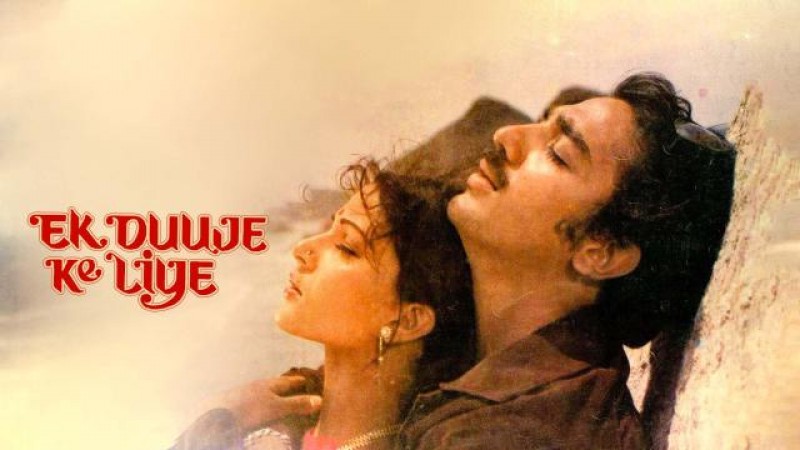
The cinema is a potent medium that not only entertains but also reflects and shapes societal attitudes and behaviors. K. Balachander's "Ek Duuje Ke Liye," which was released in 1981, is a prime example of how culture and film interact. While the film won praise for its tender depiction of cross-cultural love, it unintentionally sparked a worrying trend of depressed couples turning to tragic measures. In-depth analysis of the film's impact on this trend and its broader ramifications is provided in this article.
The love story of Vasu (Kamal Haasan) and Sapna (Rati Agnihotri), who came from different linguistic backgrounds, was the focus of the touching romantic drama "Ek Duuje Ke Liye." Due to its emotional depth and moving performances, the film, which was directed by the well-known K. Balachander, resonated with viewers.
The movie examined the difficulties of intercultural love, but unintentionally it set the stage for a perilous trend. Impressionable viewers were forever changed by the tragic climax, in which the main characters commit suicide. Inadvertently glamorizing couples committing suicide together as a sign of enduring love and union, this portrayal of love coming to a tragic end glorified the idea of love.
The movie "Ek Duuje Ke Liye" was a huge success and had an impact outside of the cinema. Some people were deeply affected by the movie's tragic climax, which featured the protagonists' tragic demise, and saw it as a romanticized resolution to their own problems. This interpretation sparked a pattern whereby couples, who were frequently experiencing emotional turmoil, thought that committing suicide was a way to find solace together.
Social norms and values are significantly shaped by the media. The media's coverage of the movie and its enormous popularity both contributed to the wrong interpretation of its tragic climax. Some people chose to express their own pain through it and seek a twisted form of romantic unity rather than seeing it as a cautionary tale.
Filmmakers have the ability to stir up feelings and discussions about important topics. However, they also have a duty to handle delicate subjects with care. While 'Ek Duuje Ke Liye' intended to depict a tragic love story, it unintentionally contributed to a risky and incorrect interpretation that idealized joint suicides as acts of unbreakable love.
Couples are increasingly taking tragic actions, which calls for awareness and intervention. Filmmakers, actors, and social influencers started to promote responsible storytelling as they became aware of the effects of media on society. To combat the damaging narrative that had taken hold, discussions on mental health, depression, and the value of getting help grew in popularity.
The legacy of "Ek Duuje Ke Liye" is intricate because it combines artistic expression with practical ramifications. The beloved movie, which was praised for its heartfelt depiction of love, unintentionally started a risky trend of couples killing themselves at the same time. This unintended outcome emphasizes the need for filmmakers to strike a balance between artistic freedom and the duty to refrain from spreading harmful ideas. It also serves as a reminder of the enormous influence that film has on how people think, how they talk, and how they change for the better. In light of this, it is crucial for storytellers to use their craft responsibly in the context of a culture that is constantly changing.
Neetu Singh's Partial Song Appearance in 'Yaarana'
When Bengali Magic Met Bollywood: The Story Behind 'Khali Haath Shaam Ayi' in 'Ijaazat'
Bollywood's Grand Gala: 'Naseeb' (1981) and the Unforgettable 'John Jani Janardhan'